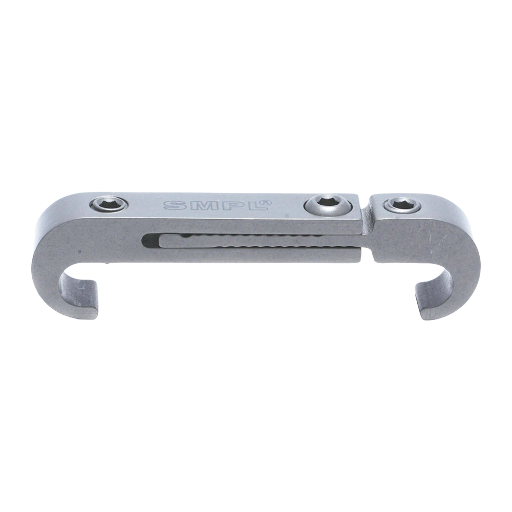E-mail iNfo@virkortho.shop Number +92-300-7477492

Crosslink Connector
Crosslink Connector Introduction
Spinal disorders that necessitate fusion surgery frequently necessitate the requirement for stability and support in order to facilitate successful fusion and restore spinal function. Crosslink connector is critical in these situations. It support the spine throughout the fusion process, assisting in the healing and integration of the damaged spinal segments. It is typically used in conjunction with spinal instrumentation, such as pedicle screws and rods, to enhance the fusion process and prevent excessive movement between spinal segments.
Crosslink Connector Sizes
Crosslink Connectors are intended to connect and stabilise spinal rods or other spinal equipment, hence restricting motion at the fusion site. Crosslink connectors help transfer loads and stresses by linking nearby equipment, aiding the fusion process and reducing excessive movement that may inhibit proper fusion.
Crosslink connectors are available in a variety of sizes and configurations to meet a variety of surgical techniques and patient anatomy. They are usually built of biocompatible materials like titanium alloy, which give strength, longevity, and compatibility with the human body.
Our type 1 Crosslink Connector has four different length:
35mm to 42mm
42mm to 52mm
52mm to 62mm
Our Type 2 Crosslink Connector have lengths variying from 80mm to 200mm
A crosslink connector’s major uses is to limit the range of motion between the spinal segments, minimising stress on the fusion site. This limitation of mobility promotes bone growth and keeps the graft material from being disrupted, resulting in the formation of a solid fusion mass. A crosslink connector improves stability, which helps to reduce problems including pseudarthrosis (failed fusion) and instrumentation failure.
Crosslink Connector Advantage
Enhanced Stability: Crosslink connectors add another point of contact between spinal rods or other apparatus, boosting the overall stability of the structure. This stability reduces micro-motion at the fusion site, generating an environment favourable to bone development and fusion.
Improved Load Distribution: Crosslink connectors assist distribute loads and stresses uniformly across the fusion area by connecting nearby equipment. This balanced load distribution decreases stress on individual screws, rods, and bone grafts, lowering the likelihood of implant failure and facilitating faster fusion.
Reduced Pseudarthrosis Risk: The failure of bone fusion is referred to as pseudodarthrosis. By stabilising the fusion site and limiting excessive motion that could impair the healing process, crosslink connectors reduce the risk of pseudarthrosis. Crosslinks improve stability, which stimulates the formation of new bone tissue and facilitates effective fusion.
Surgeon Flexibility: Crosslink connectors provide surgeons with flexibility by allowing for customisation based on patient anatomy and surgical needs. They are available in a variety of sizes, forms, and configurations, allowing the surgeon to choose the best crosslink connection for each patient’s specific needs.
The purpose of spinal fusion surgery is to encourage the fusing of neighbouring vertebrae, resulting in a solid bone mass that immobilises the damaged spinal region. This fusion process is based on the formation of new bone tissue between the vertebrae, which eventually merges them together. It is critical to minimise mobility at the surgery site in order for the bone to develop and integrate properly.
In spinal fusion operations, stability is critical. When two or more vertebrae are fused, it is critical to keep the surgical site as motion-free as possible to allow for optimal bone growth and union. Excessive movement can disturb the fusion process, resulting in problems including pseudarthrosis or instrumentation failure. Crosslink connectors address this issue by increasing stability, decreasing stress at the fusion site, and promoting the creation of a solid fusion mass.
About
Exceptional orthopedic instruments and implants from Pakistan.
Contact
Portfolio
© 2025 All rights reserved.
Location
Quick Link